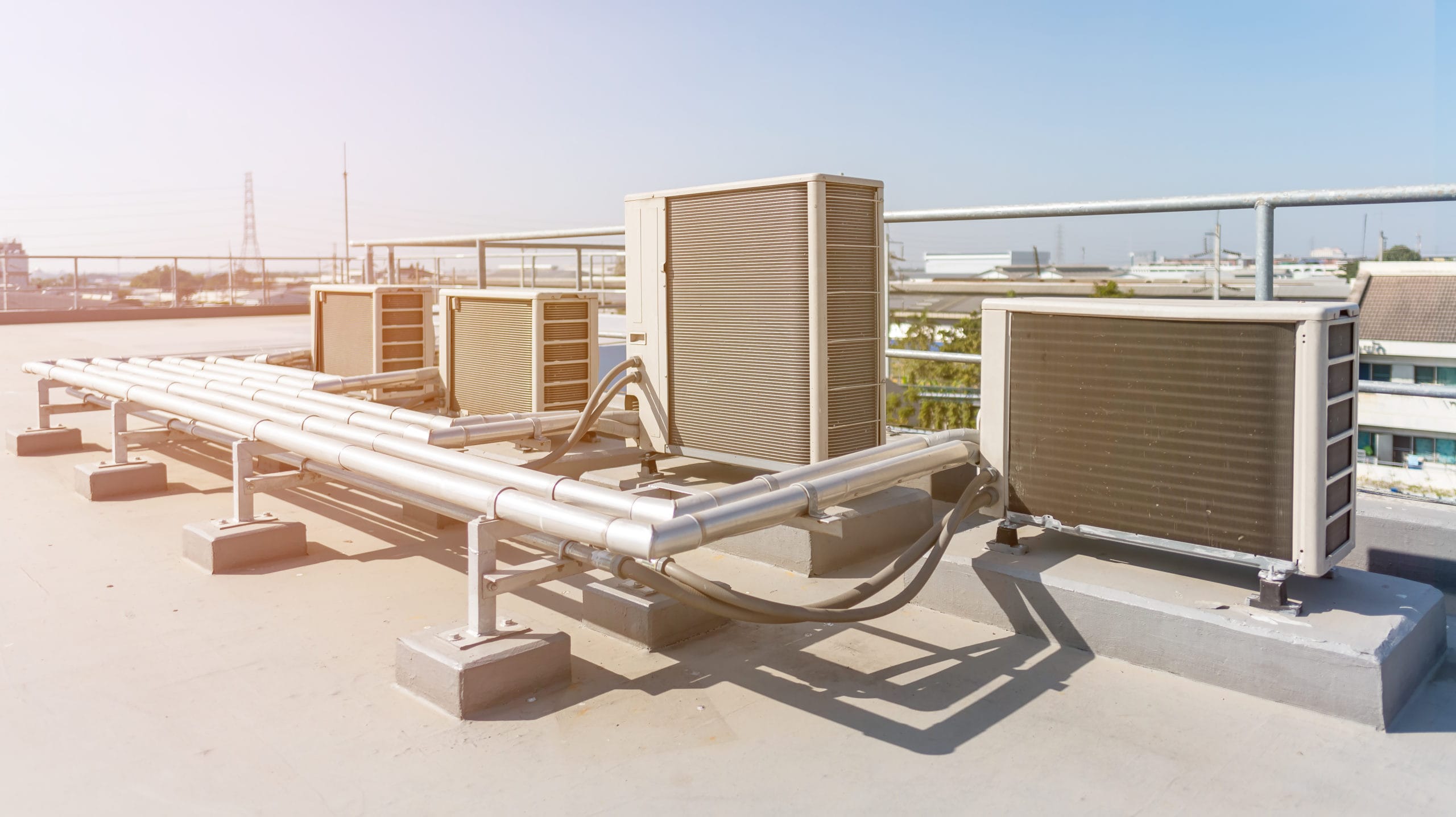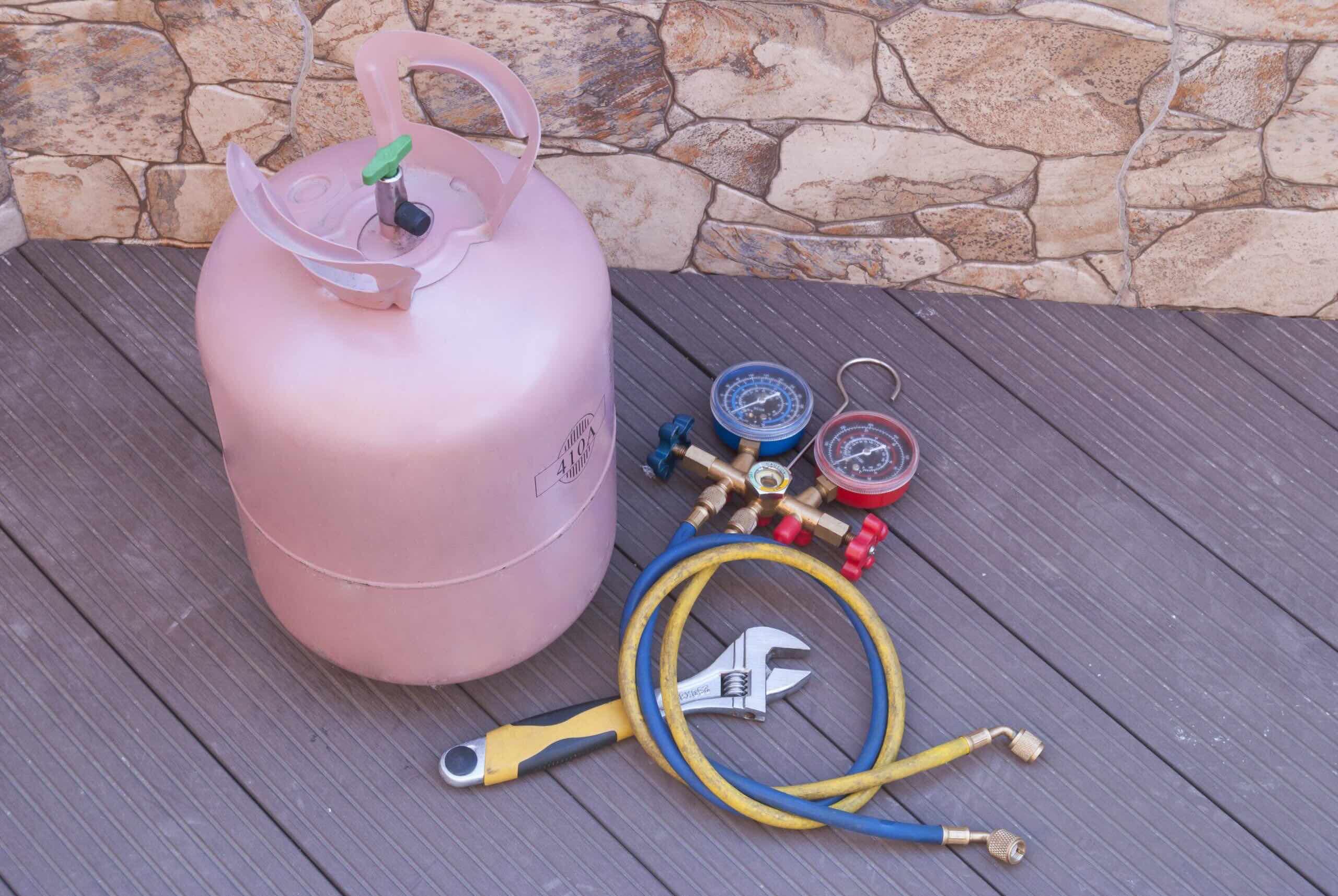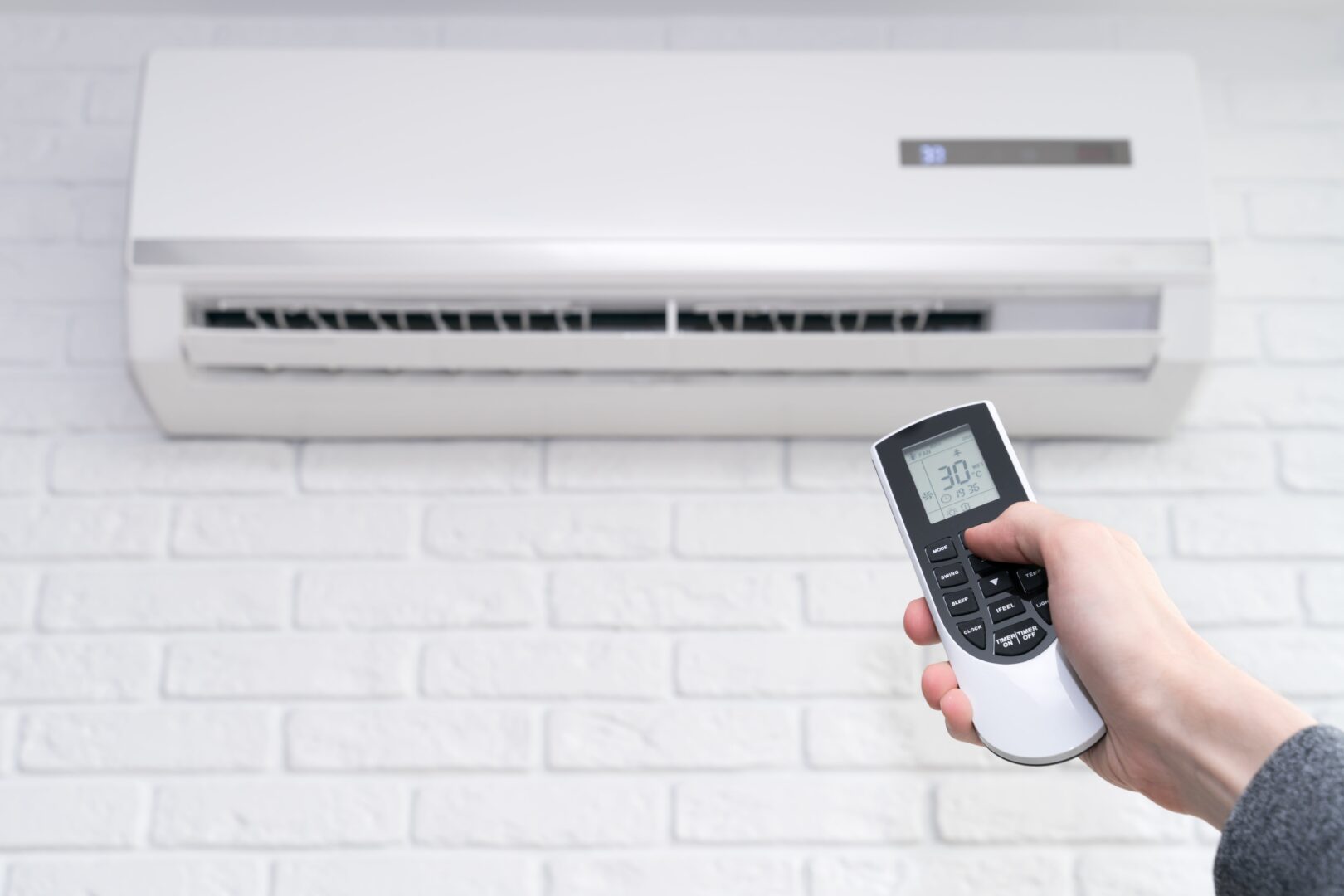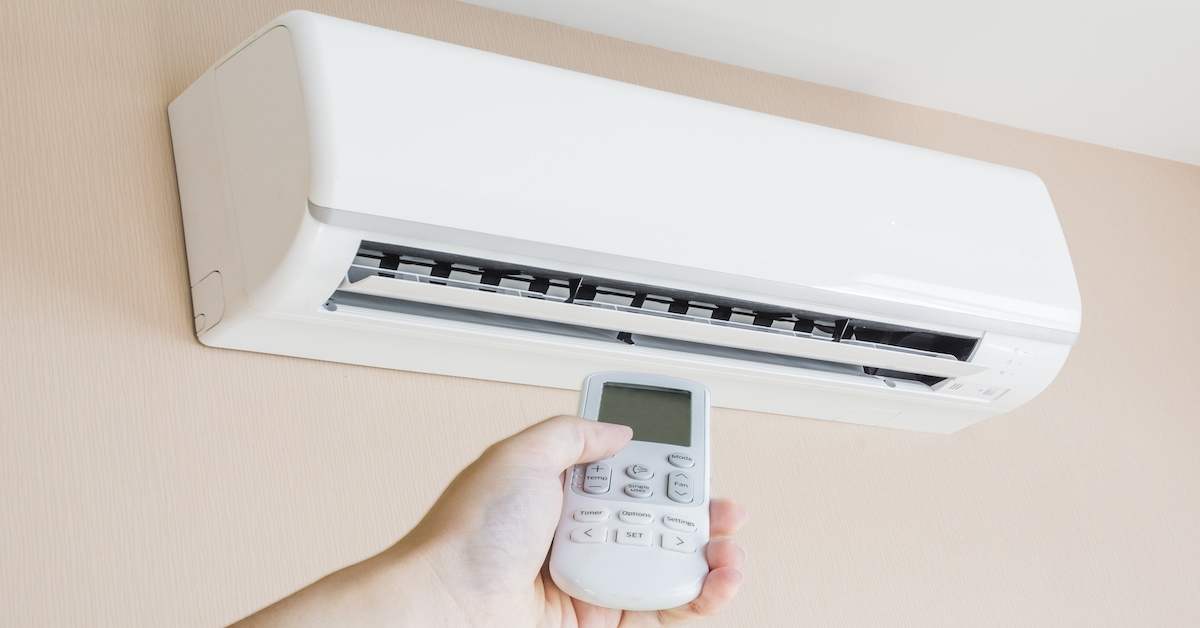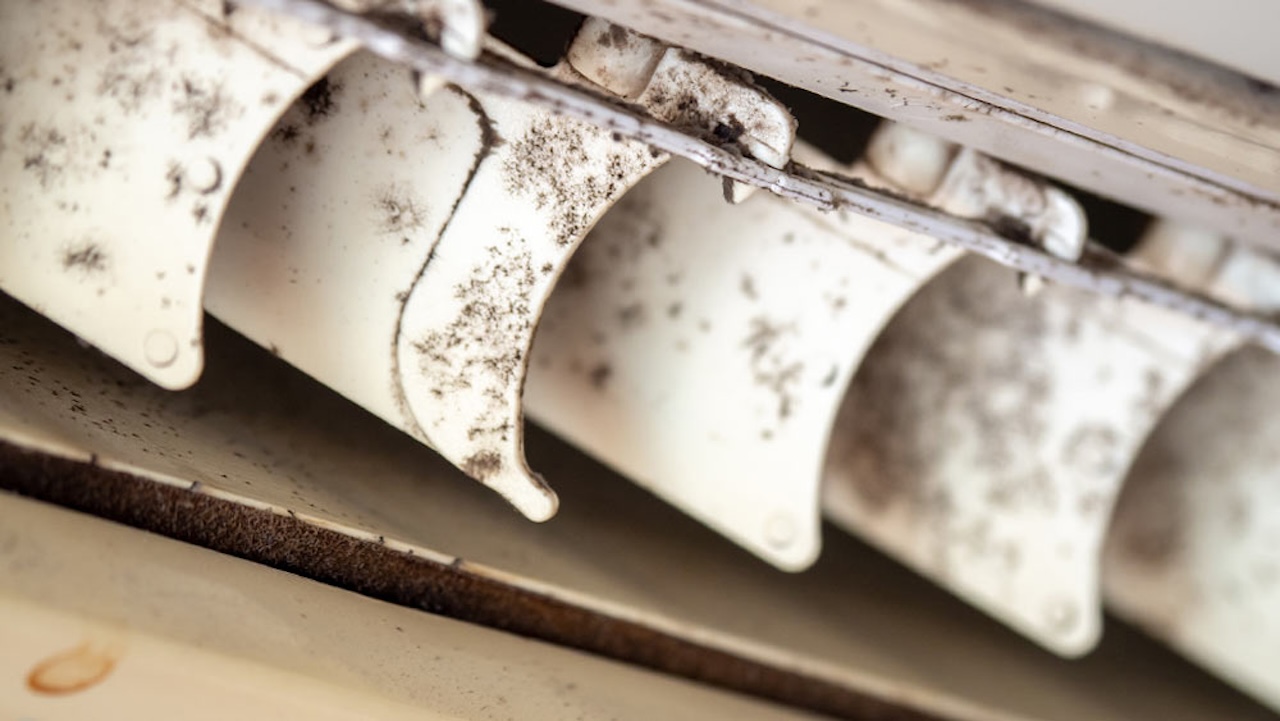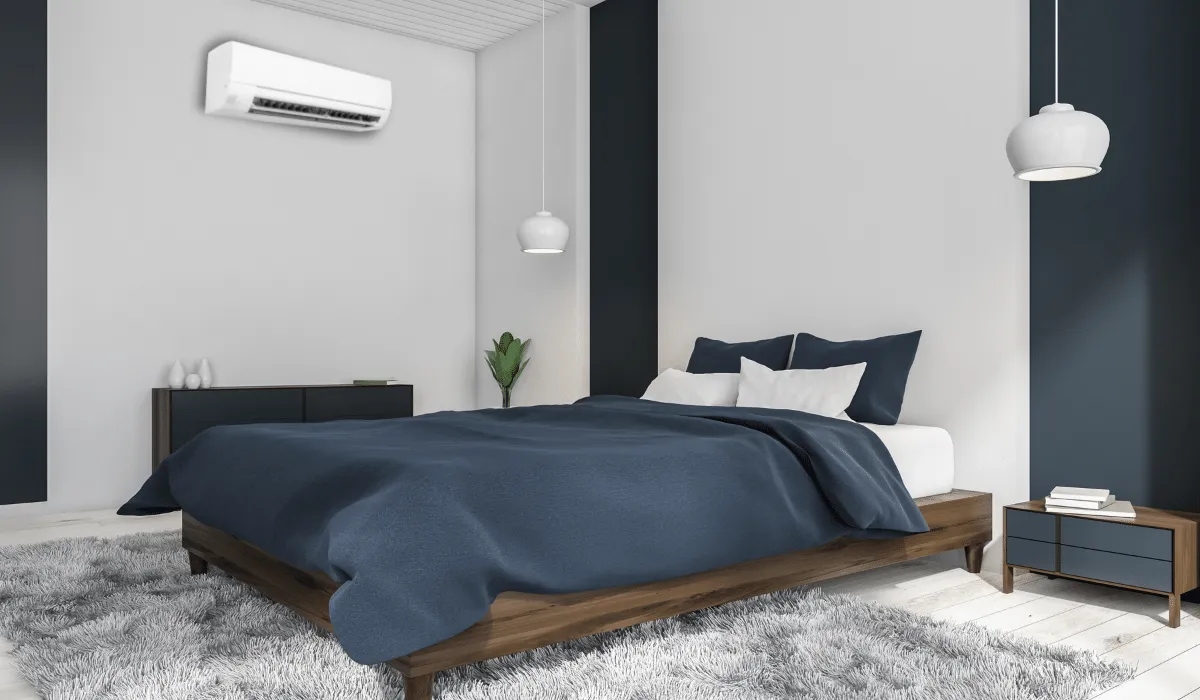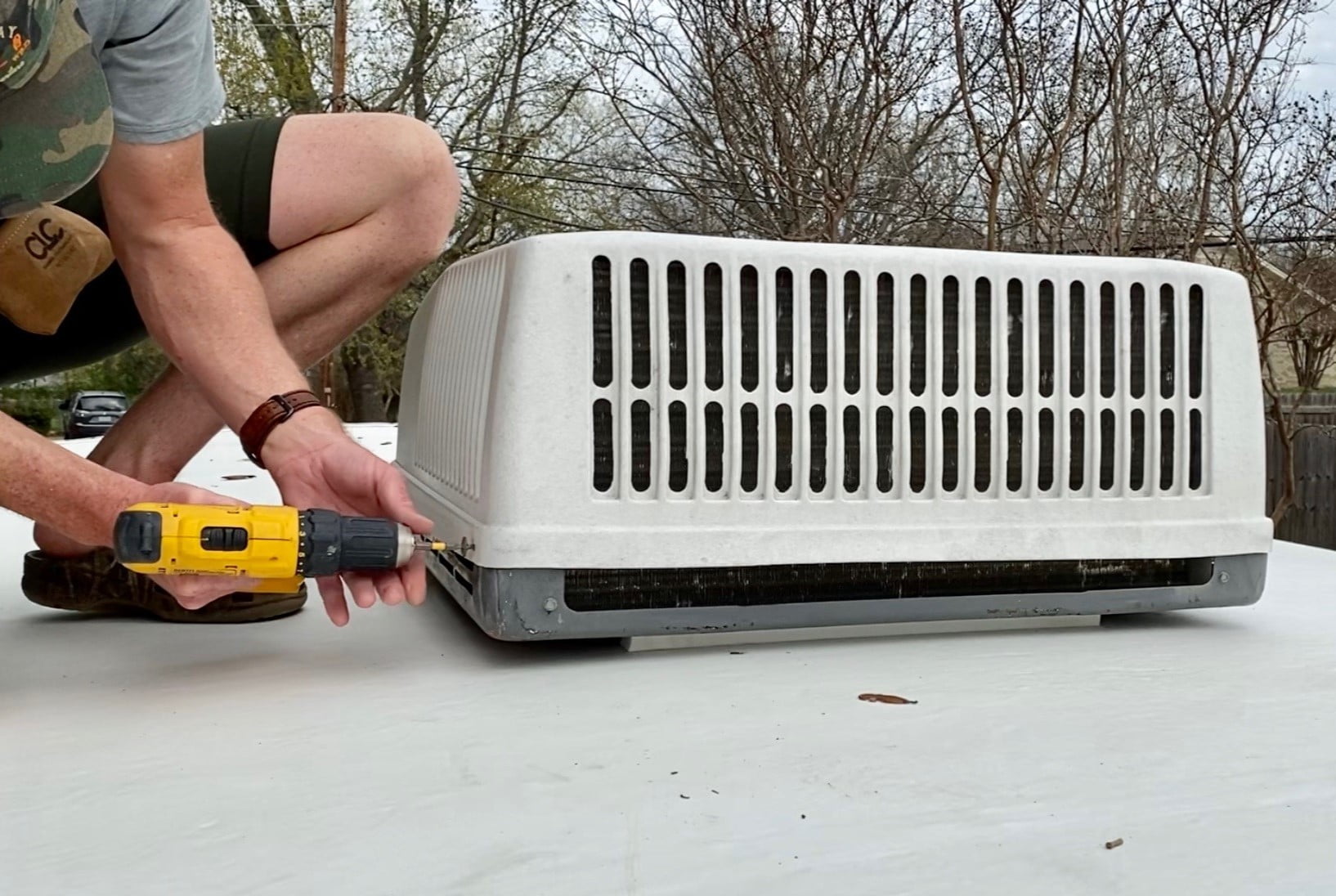Home>Home Maintenance>What Is A Ventless Air Conditioner


Home Maintenance
What Is A Ventless Air Conditioner
Modified: March 7, 2024
Learn everything you need to know about ventless air conditioners for efficient home maintenance. Explore the benefits, features, and how they work.
(Many of the links in this article redirect to a specific reviewed product. Your purchase of these products through affiliate links helps to generate commission for Storables.com, at no extra cost. Learn more)
Introduction
Welcome to the world of home maintenance! In this article, we will explore the fascinating world of ventless air conditioners. As the summer heat becomes more intense, keeping our homes cool and comfortable becomes a top priority. Traditional air conditioners require a complex system of ducts to distribute cooled air throughout the house. However, ventless air conditioners offer a convenient alternative by eliminating the need for ductwork. This makes them a popular choice for homeowners who want a cost-effective and efficient cooling solution without the hassle of installation and maintenance.
So, what exactly is a ventless air conditioner? Also known as ductless or portable air conditioners, they work by pulling in warm air in a room, cooling it, and releasing it back into the space. Unlike traditional AC units, ventless air conditioners do not require any ductwork to transport the cooled air throughout the house. Instead, they use innovative technology to cool individual rooms or areas, making them a flexible and energy-efficient option.
Now, you might be wondering how these ventless ACs actually work. Well, let’s dive into the details in the next section!
Key Takeaways:
- Ventless air conditioners provide flexible and cost-effective cooling without the need for ductwork, making them ideal for targeted temperature control in individual rooms or areas.
- Before purchasing a ventless air conditioner, consider factors such as cooling capacity, energy efficiency, noise level, room size, and maintenance requirements to make an informed decision.
Read more: What Is EER In An Air Conditioner
How Ventless Air Conditioners Work
Ventless air conditioners operate on a simple principle: extracting warm air from a room and replacing it with cool air. While the exact mechanisms may vary based on the model and type of ventless AC, the fundamental process remains the same.
Firstly, the ventless air conditioner pulls warm air from the room into its unit. This can be done through a built-in fan or by connecting the unit to a window or wall opening. Once inside the unit, the warm air passes over cooling coils containing a refrigerant. The refrigerant absorbs the heat from the air, causing it to cool down significantly.
Once the air is cooled, it is released back into the room through the front vents of the air conditioner. The cooled air helps to lower the temperature, creating a more comfortable environment. Some ventless ACs also come with adjustable vents or oscillating functions to distribute the cool air more evenly throughout the room.
One important aspect to note is that ventless air conditioners are designed for single-room cooling. They are not connected to a central cooling system like traditional AC units. Each unit is responsible for cooling the individual room it is placed in, allowing for targeted and personalized temperature control. This makes ventless air conditioners ideal for areas that need temporary cooling or for households that want to cool specific rooms instead of the entire home.
Another advantage of ventless AC units is their portability. Unlike central air systems or window units, ventless air conditioners can easily be moved from room to room. This flexibility is particularly useful for renters or homeowners who frequently change the layout of their living spaces. You can simply unplug the unit and transfer it to the new location without the hassle of complex installations or modifications.
Now that you have a better understanding of how ventless air conditioners work, let’s delve into the pros and cons of using these innovative cooling solutions.
Pros and Cons of Ventless Air Conditioners
Ventless air conditioners offer several benefits that make them an attractive cooling option for many homeowners. However, like any other appliance, they also come with a few downsides. Let’s take a closer look at the pros and cons of using ventless air conditioners.
Pros:
- Cost-effective: Ventless air conditioners are generally more affordable than traditional AC units. They require no ductwork installation, saving you money on labor costs.
- Energy-efficient: Ventless air conditioners typically have a higher energy efficiency rating compared to central cooling systems. They cool individual rooms, allowing you to conserve energy by only cooling the spaces you need.
- Easy installation: Most ventless AC units are plug-and-play, meaning they can be set up and ready to use in a matter of minutes. No professional installation is required.
- Flexibility: Ventless air conditioners are portable and can be moved from room to room as needed. This flexibility is ideal for renters or homeowners who want cooling options that can adapt to their changing needs.
- Zone cooling: With ventless AC units, you have the ability to cool individual rooms independently. This allows for personalized comfort and temperature control throughout your home.
Cons:
- Limited cooling capacity: Ventless air conditioners are designed for cooling small to medium-sized spaces. They may not effectively cool larger areas or multiple rooms simultaneously.
- Noisier operation: Compared to central cooling systems, ventless air conditioners can be noisier due to the direct operation of their fans. However, newer models are designed with quieter operation in mind.
- Restricted placement: Ventless AC units require access to a window or wall opening for proper ventilation. This limits their placement options compared to other cooling alternatives.
- No heating function: Unlike some traditional AC units, ventless air conditioners do not have a heating function. This means you may need to invest in separate heating solutions for the colder months.
- Regular maintenance: Ventless air conditioners require regular filter cleaning or replacement to maintain optimal performance. Neglecting this maintenance can affect the unit’s efficiency and air quality.
Considering these pros and cons will help you make an informed decision about whether a ventless air conditioner is the right choice for your cooling needs. Now, let’s explore the various common uses for ventless air conditioners.
Read more: What Is An Air Conditioner Condenser
Common Uses for Ventless Air Conditioners
Ventless air conditioners are versatile cooling solutions that can be used in a variety of settings. Their flexibility and ease of installation make them suitable for various applications. Let’s explore some common uses for ventless air conditioners:
1. Residential Homes:
Ventless air conditioners are commonly used in residential homes, especially in areas where central cooling systems are not practical or cost-effective. They can be installed in bedrooms, living rooms, home offices, or any other space that requires individual temperature control.
2. Apartments and Condos:
In multi-unit buildings, such as apartments and condos, ventless air conditioners offer an efficient cooling solution without the need for shared ductwork. Each unit can have its own ventless AC, providing personalized comfort for tenants.
3. Rental Properties:
For landlords or property owners, ventless air conditioners are a convenient option for cooling rental properties. Their portability allows for easy installation and removal, making them ideal for temporary cooling during the summer months.
4. Home Additions:
If you have added an extension or converted a garage into a living space, a ventless air conditioner can be a cost-effective solution for cooling these additional areas. They can be installed without the need for extensive modifications to your existing central cooling system.
5. Small Offices and Workspaces:
Small offices, home offices, and workspaces can benefit from the targeted cooling provided by ventless air conditioners. These units can create a comfortable working environment without the need to cool the entire building.
6. Server Rooms and Electronics Equipment:
Ventless air conditioners are also commonly used in server rooms and spaces with sensitive electronics equipment. They provide localized cooling, helping to maintain optimal temperatures and prolonging the lifespan of the equipment.
These are just a few examples of the common uses for ventless air conditioners. Their portability and individual cooling capabilities make them a versatile option for a wide range of applications. Now let’s move on to the factors you should consider before purchasing a ventless air conditioner.
Factors to Consider before Purchasing a Ventless Air Conditioner
Before investing in a ventless air conditioner, there are several important factors to consider. These factors will help you choose the right unit that meets your cooling needs and preferences. Let’s take a look:
1. Cooling Capacity:
Determine the cooling capacity needed for the space you want to cool. The cooling capacity is measured in British Thermal Units (BTUs) and indicates the amount of heat the unit can remove from the room per hour. Ensure that the ventless air conditioner you choose has the appropriate BTU rating for the square footage of the area you want to cool.
Read more: What Is An Evaporative Air Conditioner
2. Energy Efficiency:
Look for energy-efficient models that have a high Energy Efficiency Ratio (EER). A higher EER means the unit can provide more cooling output for the energy it consumes, resulting in lower energy bills. Energy Star certified units are a good choice as they meet strict energy efficiency guidelines set by the Environmental Protection Agency (EPA).
3. Noise Level:
Consider the noise level of the ventless air conditioner, especially if you plan to use it in a bedroom or workspace. Look for units that have a low decibel rating or come with advanced features like “quiet mode” to minimize noise output during operation.
4. Room Size and Layout:
Assess the layout of the room and determine the best placement for the ventless air conditioner. Consider factors like window or wall access for ventilation, proximity to power outlets, and any potential obstacles that might affect airflow.
5. Installation and Portability:
Check the installation requirements of the unit and ensure it aligns with your desired placement. Some units require a window or wall opening, while others can be freestanding. Additionally, consider the size and weight of the unit if you plan to move it between rooms or locations.
Read more: What Is An Inverter Air Conditioner
6. Maintenance:
Understand the maintenance requirements of the ventless air conditioner. This may include regular cleaning or replacing of filters, emptying condensation trays, and inspecting the unit for any signs of wear or damage. Units with easy-to-access filters and intuitive maintenance procedures make upkeep more convenient.
7. Additional Features:
Consider any additional features or functions that are important for your comfort and convenience. This may include programmable timers, remote control operation, adjustable airflow direction, or sleep mode settings for nighttime cooling.
By taking these factors into account, you can make an informed decision when purchasing a ventless air conditioner that best suits your needs. Now, let’s move on to the next section where we’ll explore tips for installing and maintaining a ventless air conditioner.
Tips for Installing and Maintaining a Ventless Air Conditioner
Installing and maintaining a ventless air conditioner properly is crucial to ensure optimal performance and longevity. Here are some helpful tips to guide you through the process:
1. Read the Manufacturer’s Instructions:
Before installation, carefully read the manufacturer’s instructions that come with your ventless air conditioner. Familiarize yourself with the specific requirements and guidelines provided by the manufacturer to ensure proper installation.
Read more: What Is Auto Mode In An Air Conditioner
2. Choose the Right Location:
Select the ideal location for your ventless air conditioner unit. Consider factors such as proximity to a power source, accessibility to a window or wall for ventilation, and the layout of the room for optimum air circulation. Ensure that the unit is placed on a stable surface and has sufficient clearance around it for proper airflow.
3. Secure the Unit:
If your ventless air conditioner is a freestanding unit, make sure to secure it properly to prevent any accidents or damage. Follow the manufacturer’s instructions on how to secure the unit, which may include using brackets, anchors, or support stands.
4. Check for Proper Ventilation:
Ensure that the ventless air conditioner is properly vented to allow the warm air to be expelled outside. Double-check that the venting kit or window adapter provided with the unit fits securely and is properly sealed to prevent any air leaks.
5. Clean or Replace Filters Regularly:
Clean or replace the filters in your ventless air conditioner at regular intervals. This helps to maintain efficient airflow and prevent dust and debris from accumulating. Check the manufacturer’s recommendations for cleaning frequency and follow the proper cleaning procedure.
Read more: What Size Wire For An Air Conditioner
6. Keep the Surrounding Area Clean:
Regularly clean the area surrounding the ventless air conditioner to prevent any obstructions to the air intake or exhaust. Remove any dust, debris, or objects that may hinder the unit’s performance or airflow.
7. Schedule Professional Maintenance:
Consider scheduling professional maintenance for your ventless air conditioner on a periodic basis. A professional technician can ensure that all components are in good working condition, clean the unit thoroughly, and address any potential issues that may affect performance.
8. Store Properly in Off-Season:
If you plan to store your ventless air conditioner during months when cooling is not required, make sure to clean the unit thoroughly, remove any standing water in the tray, and store it in a dry and well-ventilated area. Follow the manufacturer’s instructions for proper storage procedures.
By following these tips, you can install and maintain your ventless air conditioner effectively, ensuring optimal cooling performance and prolonging its lifespan. In the next section, we’ll explore some alternative cooling options to consider.
Alternatives to Ventless Air Conditioners
While ventless air conditioners offer unique benefits, they may not be suitable for everyone or every situation. If you’re considering alternative cooling options, here are a few alternatives to ventless air conditioners:
Read more: What Is A Wall Sleeve Air Conditioner
1. Central Air Conditioning:
Central air conditioning systems are the most common cooling option for larger homes or buildings. They use a network of ducts to distribute cooled air throughout the entire space. Central AC systems provide consistent and even cooling but require professional installation and regular maintenance.
2. Window Air Conditioners:
Window air conditioners are a popular choice for single or multiple rooms. These units are mounted directly on a window or wall, allowing them to expel hot air outside. Window AC units are affordable and can provide efficient cooling, but they may obstruct views and require proper sizing and installation.
3. Portable Air Conditioners:
Similar to ventless air conditioners, portable air conditioners do not require ductwork. They can be moved from room to room and typically require a window or vent for exhaust. Portable AC units offer convenience and flexibility, but they may be less efficient in cooling larger areas compared to other options.
4. Evaporative Coolers:
Also known as swamp coolers, evaporative coolers work by evaporating water to cool the air. These units are effective in dry climates and provide an eco-friendly cooling solution. Evaporative coolers require a constant supply of water and are more suitable for areas with low humidity.
Read more: What Is The Quietest Window Air Conditioner
5. Ceiling Fans:
Ceiling fans are cost-effective and energy-efficient options for providing a breeze and better air circulation. While they do not lower the temperature like air conditioners, ceiling fans can make a room feel cooler by creating a wind-chill effect. They can be used in conjunction with other cooling methods for added comfort.
6. Heat Pumps:
Heat pumps are versatile systems that can both cool and heat your home. They extract heat from the air in warmer months and release it outside, providing cooling. In colder months, they can reverse the process to provide heating. Heat pumps are efficient but require professional installation and regular maintenance.
Consider your specific cooling needs, budget, and the features of each alternative option before making a decision. Each option has its own advantages and limitations, so choose the one that best aligns with your requirements. In the final section, we’ll wrap up our discussion on ventless air conditioners.
Conclusion
Ventless air conditioners offer a convenient and efficient cooling solution for homeowners who want flexibility and cost-effectiveness. By eliminating the need for ductwork, these units provide targeted cooling for individual rooms or areas. Throughout this article, we explored how ventless air conditioners work, their pros and cons, common uses, factors to consider before purchasing, installation and maintenance tips, as well as alternative cooling options.
Ventless air conditioners, also known as ductless or portable AC units, operate by pulling in warm air, cooling it, and releasing it back into the room. This innovative technology allows for energy-efficient cooling and personalized temperature control. We discussed the benefits of ventless air conditioners, including their affordability, energy efficiency, easy installation, flexibility, and zone cooling capabilities. However, it’s important to consider factors such as the cooling capacity, noise level, room size, and maintenance requirements before purchasing a unit.
While ventless air conditioners are a popular cooling choice, we also explored alternative options to meet various cooling needs. Central air conditioning, window air conditioners, portable AC units, evaporative coolers, ceiling fans, and heat pumps are all viable alternatives depending on your specific requirements.
In conclusion, ventless air conditioners provide a convenient and cost-effective cooling solution for residential homes, apartments, rental properties, and small office spaces. Their portability and individual cooling capabilities make them a versatile option for various applications. By considering the cooling capacity, energy efficiency, noise level, room size, and maintenance requirements, you can choose the right unit to keep your home comfortable during the hot summer months.
Remember to carefully follow the manufacturer’s instructions for installation and maintenance to ensure optimal performance and longevity of your ventless air conditioner. With proper care, you can enjoy the benefits of efficient cooling for years to come.
Frequently Asked Questions about What Is A Ventless Air Conditioner
Was this page helpful?
At Storables.com, we guarantee accurate and reliable information. Our content, validated by Expert Board Contributors, is crafted following stringent Editorial Policies. We're committed to providing you with well-researched, expert-backed insights for all your informational needs.
